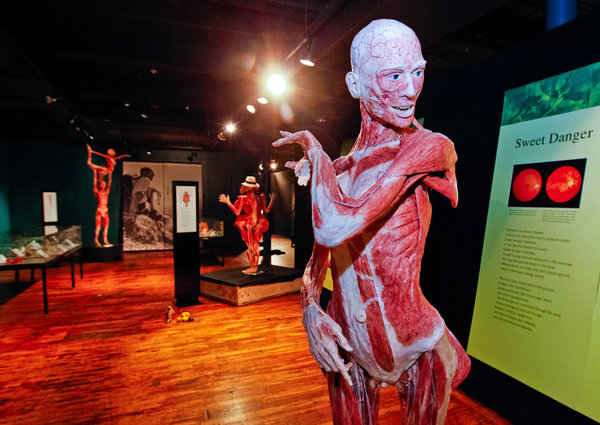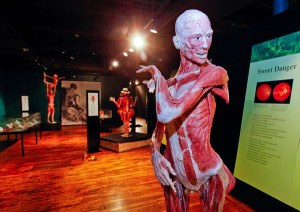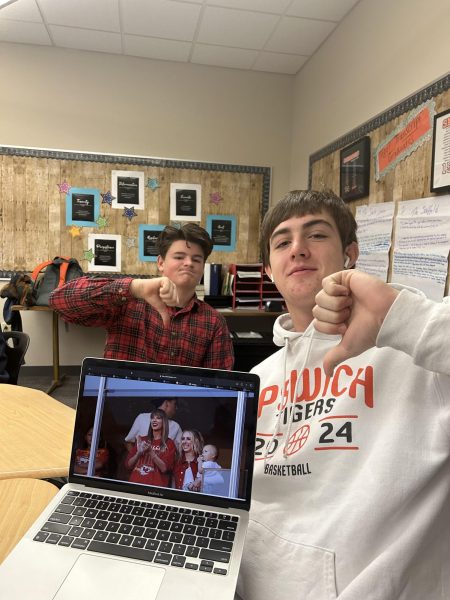The Body Worlds Vital Exhibit

Where can you see over 200 chemically preserved body parts and 15 whole cadavers, and explore numerous dining options at the same time? Quincy Market, in the bustling city of Boston. On Friday November 22, 2013, The Body Worlds Vital exhibit opened to the public on the second floor of the market rotunda. It features real human bodies, which is the sole reason why 40 million people worldwide have visited the exhibit. “Real human bodies teach visitors about their own bodies. When people understand more about how their body works and how they can break down through various circumstances and situations, they are empowered to take a more active role in their own health choices,” says educators at Body Worlds Boston. The purpose of the exhibit is, “to educate students on the human body, and the diseases that can affect it….Body Worlds Vital illustrates, first hand, the effects of life-threatening diseases, such as cancer, diabetes and heart ailments, and communicates how, through informed choices and lifestyle changes many of these diseases can be avoided or mitigated.” The exhibit explores the subjects of anatomy, biology, kinesiology, and athletics, and also the effects of cancer, diabetes, and heart disease. However, the real question is, how are they able to put real human bodies on display?
Before the bodies can be put out for the public to see, they go through a preservation process called plastination. Plastination is the process by which the fluids in the body are replaced with plastics such as silicone rubber, polymers and resins to then permanently preserve these specimens. The bodies for the exhibit come from the Institute for Plastination’s body-donor program. Dr. Gunther von Hagens established the body donation program in 1983, shortly after he invented Plastination. The program is now managed by Dr. Von Hagens’ Institute for Plastination in Heidelberg, Germany. The Institute for Plastination has more than 13,000 donors on its roster, and more than 1,300 of them are Americans.
The Body Worlds Vital exhibit is a great experience for those who are looking to educate themselves on the human body, or for those who are just looking to be entertained. After visiting the exhibit, many people gain a greater appreciation for their own bodies and others learn about the differences between healthy and diseased organs. Many visitors come away from the experience with a greater appreciation for their bodies, and a strong commitment to taking care of them.
I had the chance to speak with Ipswich’s very own anatomy teacher, Mrs. Hoyle, about her own experience at the Body Worlds Vital exhibit in Boston. When asked the question, what interests you about the exhibit and why do you want to visit it, her response was, “The plastination, the process, and the connection to anatomy are fascinating. I’ve seen the exhibit when it was at the museum of science, so I know exactly what I’m going to see. I’m going to see all of these different cadavers with different body systems exposed, and preserved, and some of it, is in the form of art.” I also had the chance to speak with Neil Coleman, a senior at Ipswich High School who visited the exhibit last month. When asked the question, how did you feel about the exhibit, was it a good experience or a bad experience, Neil responded by saying, “it was a great experience, it was really interesting to see what the human body looks like, with all of the muscles and everything because it was all exposed.” All in all, the Body Worlds Vital exhibit is definitely an experience you don’t want to miss.



